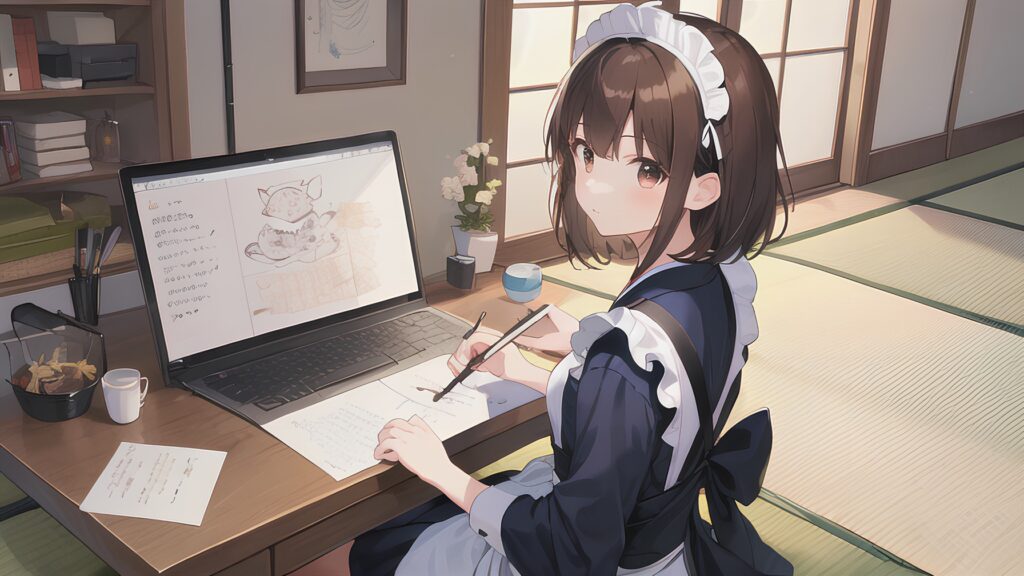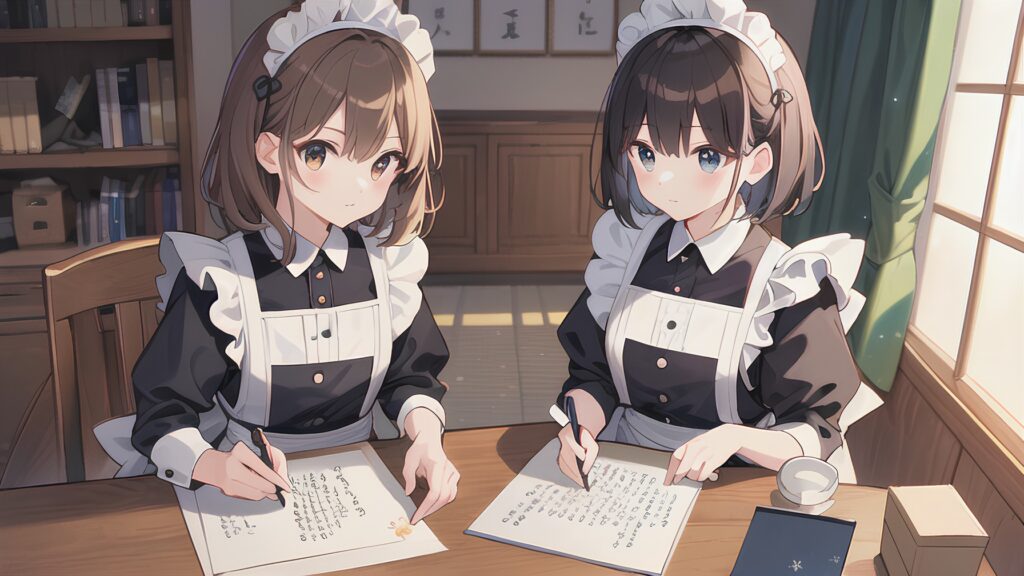こんにちは。
漢字はとっても難しい。
漢字のことを知ると、漢字が好きになって、「難しい」が「楽しい」に変わるかもしれないですよ!
Hello.
“Kanji is very difficult.
But if you learn more about kanji, you might start to like it, and ‘difficult’ could turn into ‘fun’!”

漢字のルーツとその成り立ち / The Roots and Origins of Kanji
漢字は日本語の中でも特に難しいと感じる方も多いでしょう。ここでは、漢字のルーツや、それにまつわる情報を解説します。 / Kanji is often considered one of the most challenging aspects of the Japanese language. Here, we will explore the roots and details about kanji.
1. 漢字のルーツ / The Roots of Kanji
漢字は約3000年前の古代中国で生まれました。最初の形は「甲骨文字」と呼ばれるもので、亀の甲羅や動物の骨に刻まれた文字です。これは占いの結果を記録するために使われました。 / Kanji originated around 3,000 years ago in ancient China. The earliest forms, known as “oracle bone script,” were inscribed on turtle shells and animal bones. These characters were used to record the results of divination.
例: / Examples:
- 「日」= 太陽の形 / “日” = The shape of the sun
- 「木」= 木の形 / “木” = The shape of a tree
- 「川」= 川の流れる形 / “川” = The flowing shape of a river
これらの絵のような形が少しずつ簡略化されて、現在の漢字の形になりました。 / These pictorial shapes gradually evolved into the simplified forms we see today in modern kanji.
2. 漢字の成り立ち / The Structure of Kanji
漢字には6つの成り立ちの種類があるとされています。「六書」と呼ばれます。 / Kanji can be categorized into six types of composition, known as the “Six Principles” (Rikusho):
- 象形文字: 物の形を表現した文字 / Pictograms: Characters that depict the shape of objects
例: 山、木、月 / Examples: 山 (mountain), 木 (tree), 月 (moon) - 指事文字: 抽象的な概念を記号で表した文字 / Ideograms: Characters representing abstract concepts
例: 上、下、一、二 / Examples: 上 (up), 下 (down), 一 (one), 二 (two) - 会意文字: 複数の文字を組み合わせて意味を表した文字 / Compound Ideograms: Characters combining two or more elements to convey meaning
例: 明(「日」と「月」で明るさを表す) / Example: 明 (bright; combining 日 “sun” and 月 “moon”) - 形声文字: 意味を表す部分と音を表す部分を組み合わせた文字 / Phono-semantic compounds: Characters combining a meaning component and a phonetic component
例: 河(「氵」は水、「可」は音を表す) / Example: 河 (“氵” represents water, “可” indicates the sound) - 転注文字: 本来の意味が転じて別の意味に使われる文字 / Derivative Characters: Characters whose original meanings have shifted to convey different meanings
例: 楽(元は音楽の意味→楽しむの意味にも) / Example: 楽 (originally meant “music,” later extended to “enjoyment”) - 仮借文字: 同じ発音の別の意味の言葉に当てはめた文字 / Borrowed Characters: Characters used for different words with the same pronunciation
例: 我(元は武器の意味→自分を指す言葉に) / Example: 我 (originally meant “weapon,” later used to mean “self”)
3. 日本と漢字 / Kanji in Japan
漢字が日本に伝わったのは4〜5世紀頃と言われています。当時の日本では文字がなく、中国から伝わった漢字を借りて記録や文章を書くようになりました。これが「漢字文化圏」の始まりです。 / Kanji was introduced to Japan around the 4th to 5th centuries. At the time, Japan had no writing system, so kanji was borrowed from China to record information and compose texts. This marked the beginning of the “Kanji Cultural Sphere.”
日本では漢字を独自にアレンジして使い始め、以下のような形で発展しました: / In Japan, kanji was adapted and developed uniquely as follows:
- 訓読み: 漢字に日本語の読み方を当てたもの / Kun-yomi: Assigning Japanese readings to kanji (e.g., 山 → やま “yama”)
- 音読み: 中国語の発音を取り入れたもの / On-yomi: Incorporating Chinese pronunciations (e.g., 山 → さん “san”)
さらに、漢字を簡略化したり、組み合わせて独自の文字(国字)も作られました。 / Additionally, simplified or combined characters unique to Japan (known as kokuji) were created. 例: 働、峠、畑 / Examples: 働 (work), 峠 (mountain pass), 畑 (field)
4. 現代の漢字の役割 / The Role of Kanji Today
漢字は今でも日本語の中で重要な役割を果たしています。ひらがなやカタカナと組み合わせて使うことで、文章が読みやすくなります。 / Kanji continues to play a vital role in Japanese. Used alongside hiragana and katakana, it makes texts easier to read.
- 漢字: 意味を強調 / Kanji: Emphasizes meaning (e.g., 大事 “important,” 小説 “novel”)
- ひらがな: 文法や接続 / Hiragana: Marks grammar and connections (e.g., 〜が “ga,” 〜に “ni”)
- カタカナ: 外来語や強調 / Katakana: Represents loanwords or emphasis (e.g., テレビ “television,” アイスクリーム “ice cream”)
5. 漢字の学び方のコツ / Tips for Learning Kanji
漢字が難しいと感じるときは、次の方法を試してみてください: / If you find kanji challenging, try these methods:
- イメージで覚える: 漢字の形から意味を想像する / Learn through imagery: Visualize meanings based on kanji shapes (e.g., 木 → 木の形 “tree”)
- 部首で分類する: 部首ごとに仲間を覚える / Group by radicals: Learn related characters by their radicals (e.g., 氵 relates to water)
- 書いて覚える: 手を動かして記憶を強化する / Practice writing: Strengthen memory through writing

まとめ
漢字があると文章がとても美しくなると思いませんか?
漢字の意味や形を文字列として認識するとそう思います。
平仮名、片仮名、そして漢字を組合せ私たち日本人は文字を書いたり、メッセージを送りあったりしています。言葉を大切に考えて自分の発信すると相手への伝わり方も違った印象になるかもしれません。
美しい漢字、心に響く言葉など今後も少しづつ紹介したいと思います。
“Don’t you think having kanji makes sentences so much more beautiful?
When you recognize the meanings and shapes of kanji as a sequence of characters, it really feels that way.
By combining hiragana, katakana, and kanji, we Japanese write words and exchange messages with one another.
If we carefully consider the words we use, the way our messages resonate with others might leave a different impression.
I’d like to continue introducing beautiful kanji and words that touch the heart little by little in the future.”
それではまたね!
See you next time!
コメント